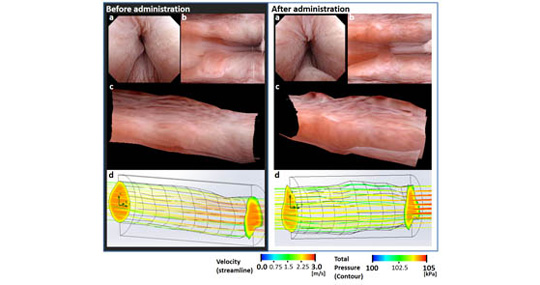
Voiding dysfunction is common in the aged male population. However, the obstruction mechanism in the lower urinary tract and critical points for obstruction remains uncertain. The aim of this paper was to develop a system to investigate the relationship between voiding dysfunction and alteration of the shape of the prostatic urethra by processing endoscopic video images of the urethra and analyzing the fluid dynamics of the urine stream. A panoramic image of the prostatic urethra was generated from cystourethroscopic video images. A virtual 3-D model of the urethra was constructed using the luminance values in the image. Fluid dynamics using the constructed model was then calculated assuming a static urethra and maximum urine flow rate. Cystourethroscopic videos from 11 patients with benign prostatic hyperplasia were recorded around administration of an alpha-1 adrenoceptor antagonist. The calculated pressure loss through the prostatic urethra in each model corresponded to the prostatic volume, and the improvements of the pressure loss after treatment correlated to the conventional clinical indices. As shown by the proposed method, the shape of the prostatic urethra affects the transporting urine fluid energy, and this paper implies a possible method for detecting critical lesions responsible for voiding dysfunction. The proposed method provides critical information about deformation of the prostatic urethra on voiding function. Detailed differences in the various types of relaxants for the lower urinary tract could be estimated.
View full article

